Patra Ni Macchi: Fish Baked in a Banana Leaf with Coriander and Coconut Chutney
Makes enough to coat fish for 6, plus extra for sandwiches the next day
This is a quintessential Parsi fish dish, favoured at weddings and other special occasions – and for good reason. Imagine, if you will, a succulent chunk of firm, white fish, coated in a paste of ground coconut, fresh coriander leaves and sour mango, then wrapped in a banana leaf and steamed until the fish flakes away from itself. Now imagine having that fragrant parcel gifted on your plate; the excitement of unwrapping the green leaf to find a moist piece of fish, coated in the most flavoursome tangy green paste. I think it is the best present
anyone could receive at the dinner table.
There are no hard-and-fast rules for choosing the fish you serve. Typically, Parsis would use pomfret, which you may be able to get hold of frozen, but I always think it’s better to use fresh. In that case, hake, mullet, coley, bream and sea bass are all fantastic options. You can prepare small fish (around the size of your hand) whole; bigger fish (such as hake and coley) are better prepared as fillets, which makes it easy to judge portions. I prefer to leave the skin on – once the fish has steamed in the leaf the skin becomes soft and
delicious.
You will find banana leaves readily available in Asian supermarkets. They are usually trimmed and ready to use, but a wipe with a damp cloth for good measure won’t hurt. If they still have the spines running down them trim these away, as they hinder the folding. Banana leaves are waxy, so they need a lick of heat to make them more pliable – pass your leaves over an open flame, or warm them in a dry frying pan, as if they were a roti.
Alternatively, use frozen. Frozen banana leaves (also readily available in Asian supermarkets) tend to be softer and easier to fold once they’ve defrosted than they are when they are fresh.
If you can’t find banana leaf, baking paper will achieve similar results – although it not as much fun for the eye when they are served up. Depending on the size of the fish you are wrapping, for each fish, cut a piece of banana leaf into a rectangle roughly three times bigger than the piece of fish itself.
–
6 small firm white fish or fish fillets (see recipe introduction)
lemon juice
coconut, coriander and sour mango chutney
6 banana leaves
seasalt and freshly cracked black pepper
–
1. Season the fish well with salt, pepper and a squeeze of lemon juice, then liberally apply the chutney all over the fish, coating it in a layer a few millimetres thick.
2. Place the fish in the centre of a banana-leaf rectangle and fold in the sides to create a parcel. You can tie the parcel with string so that it holds, or just flip it over to keep the folds pinned underneath. Repeat for each piece of fish.
3. There are several ways to cook the fish. The first is the classic: in a bamboo steamer (a saucepan of water topped with a steaming basket and a lid will do the trick if you don’t have a bamboo version). Depending on the size of the fish, steaming should take 10 minutes, until the fish is opaque, flaking apart and cooked
through.
4. I really enjoy the flavour of roasting the fish in the oven. Preheat the oven to 200°C/180°C fan. Place a shallow tray of water on the floor of the oven to heat up at the same time (this will create steam to help cook the fish and keep it moist). Lay the wrapped fish on a baking tray, then quickly open the oven door and pop the baking tray inside, trying not to let too much steam escape. depending on the size of the fish this method should take about 15 minutes.
5. Finally, you can cook the coated fish without wrapping it in anything at all – a method for a quick, home-style dinner. Preheat the oven to 200°C/180°C fan. Lightly coat each piece of fish in the chutney and lay it flat in a casserole dish. Spoon any remaining chutney (if there is any) evenly over the top and bake 15–20 minutes, or until the fish is cooked and the chutney has baked look over the top.
I like the idea of this as a small starter on its own or a dish to share at the table. During the summer months, the fish parcels can be grilled on the barbeque and served alongside grilled sweetcorn and fennel salad.





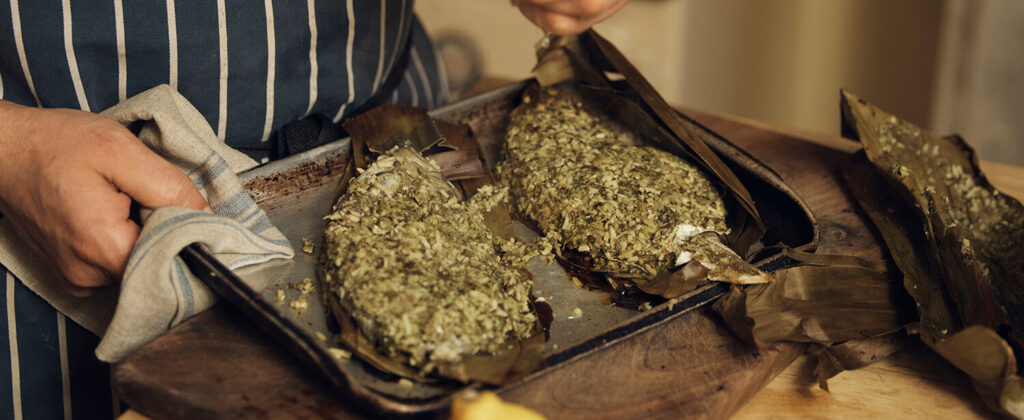
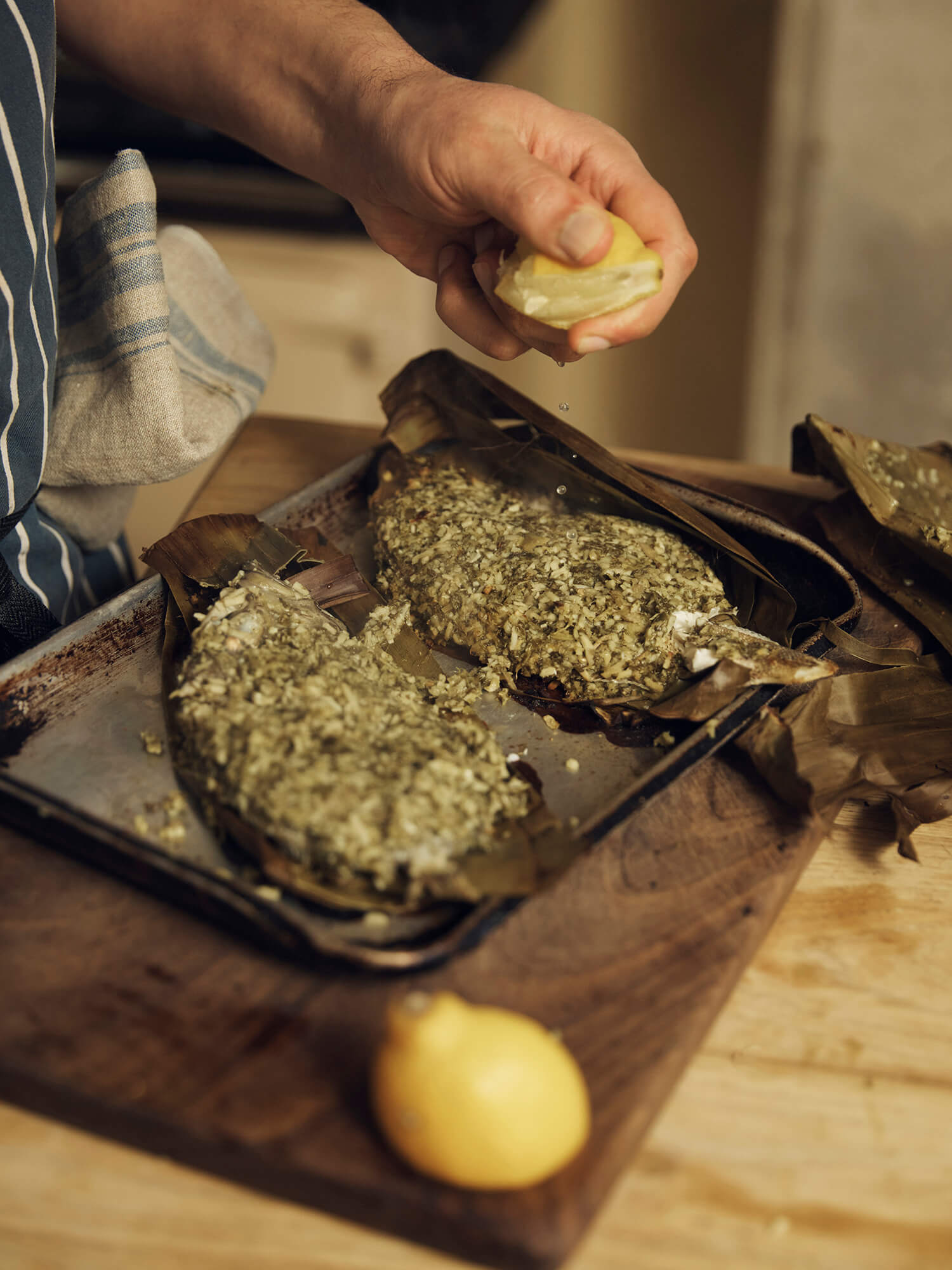
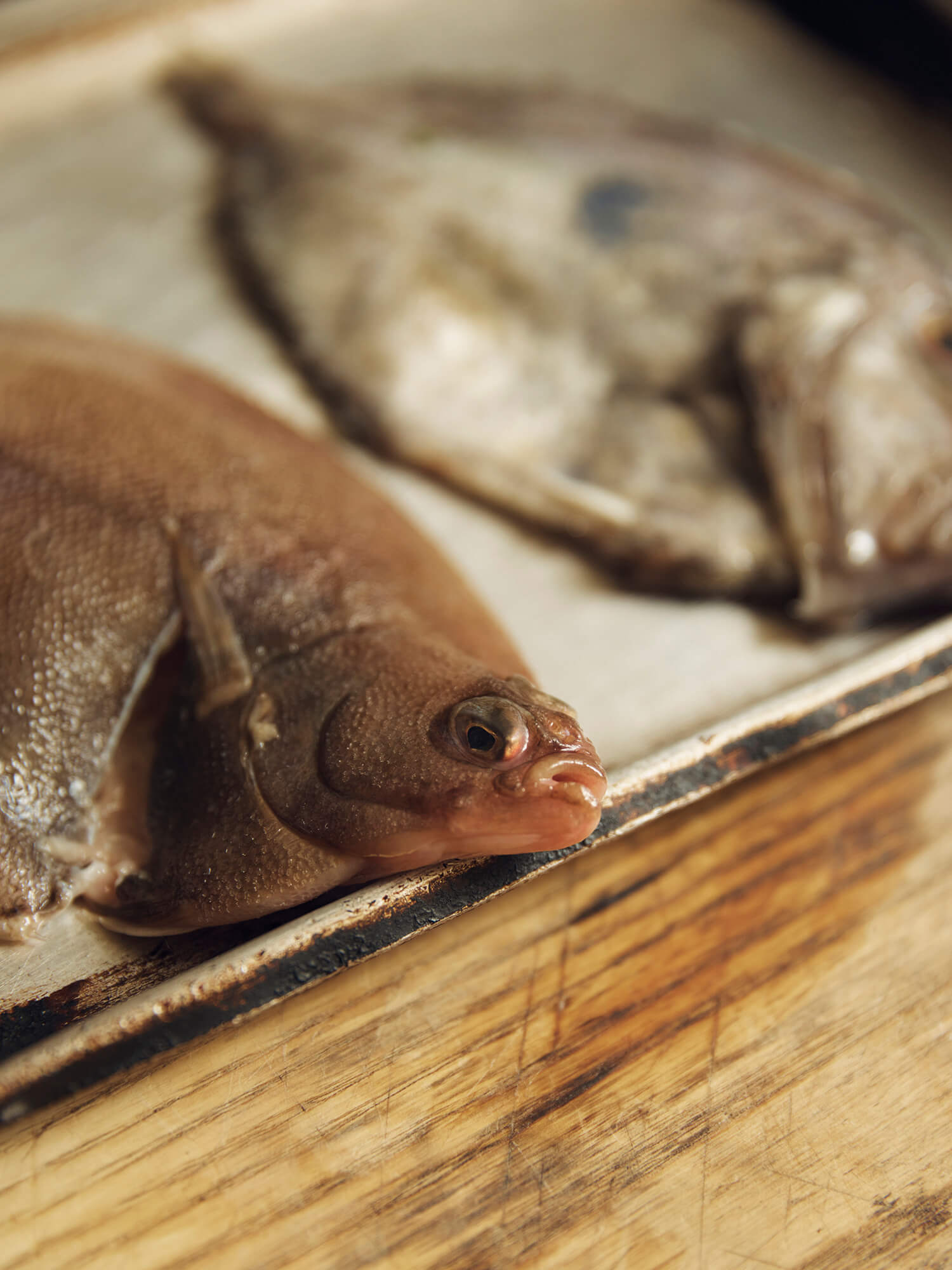
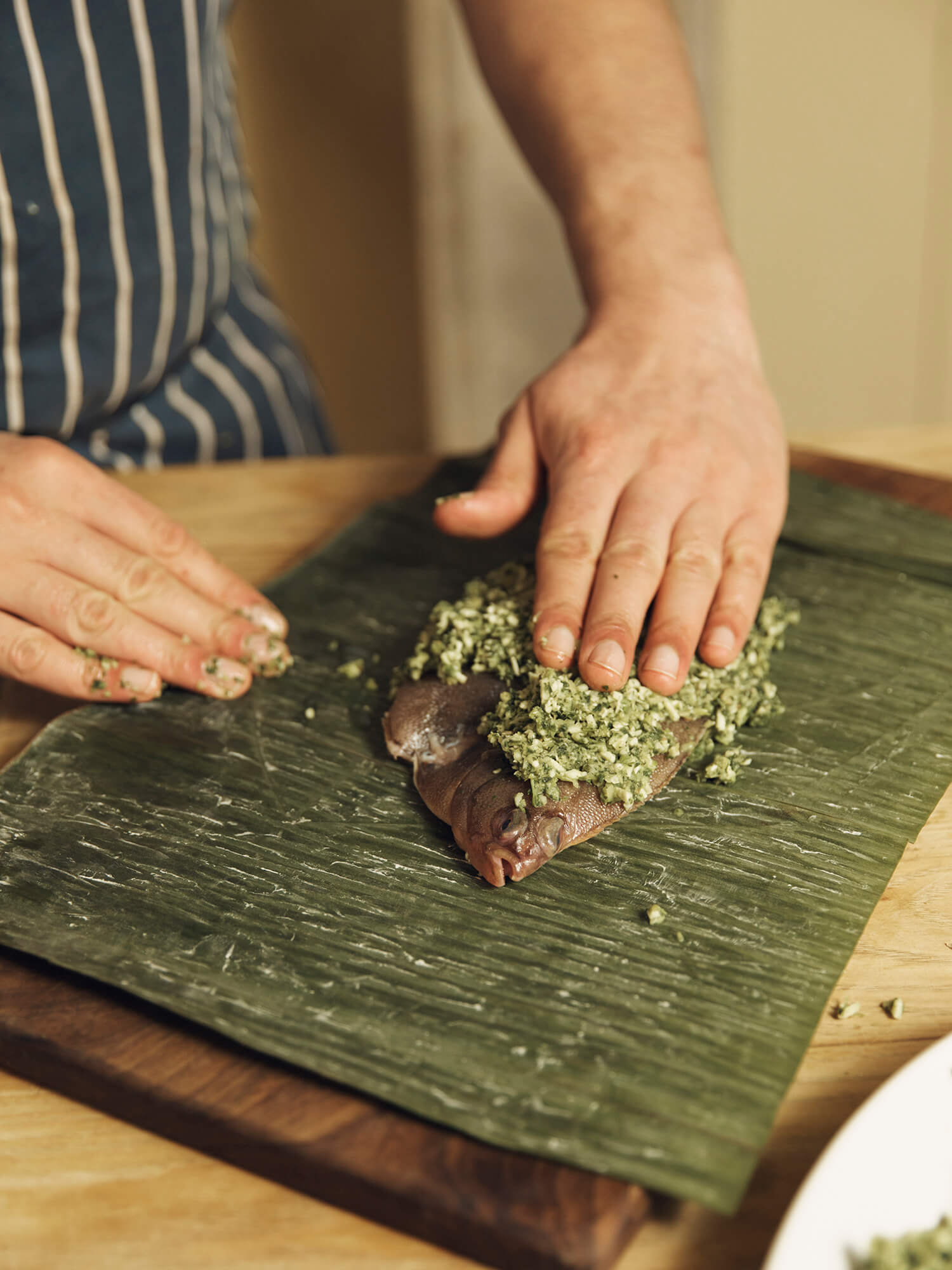
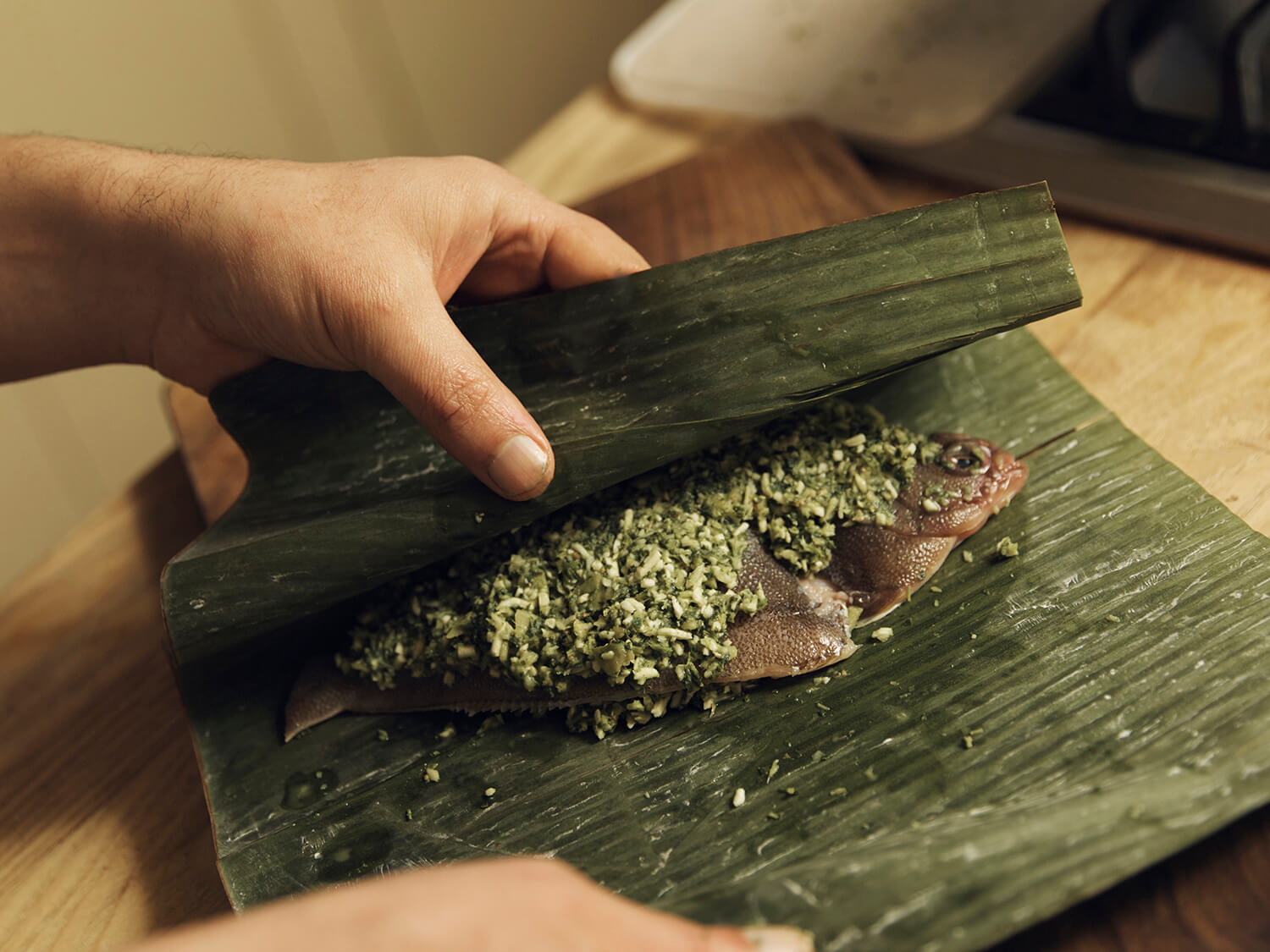
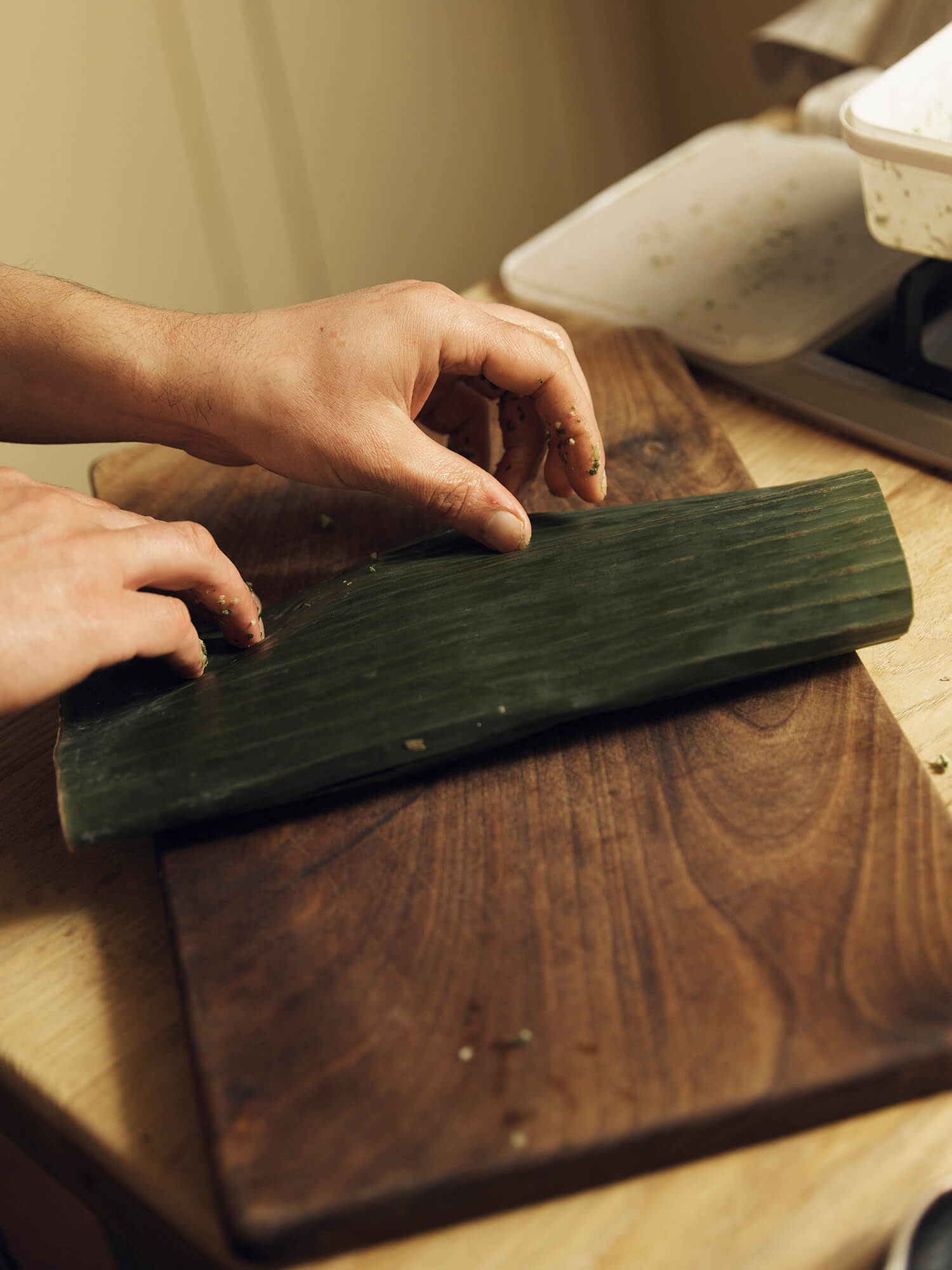
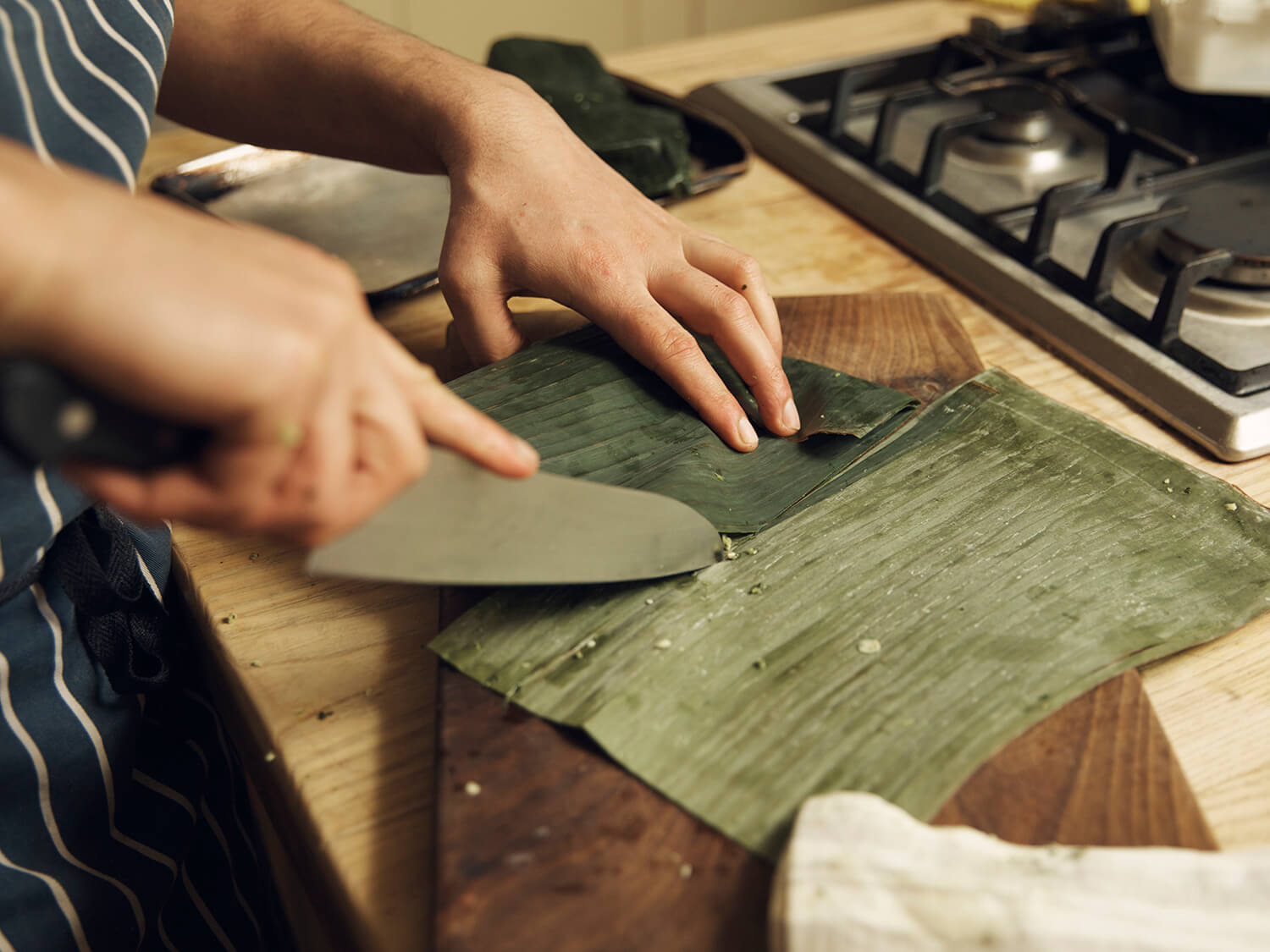
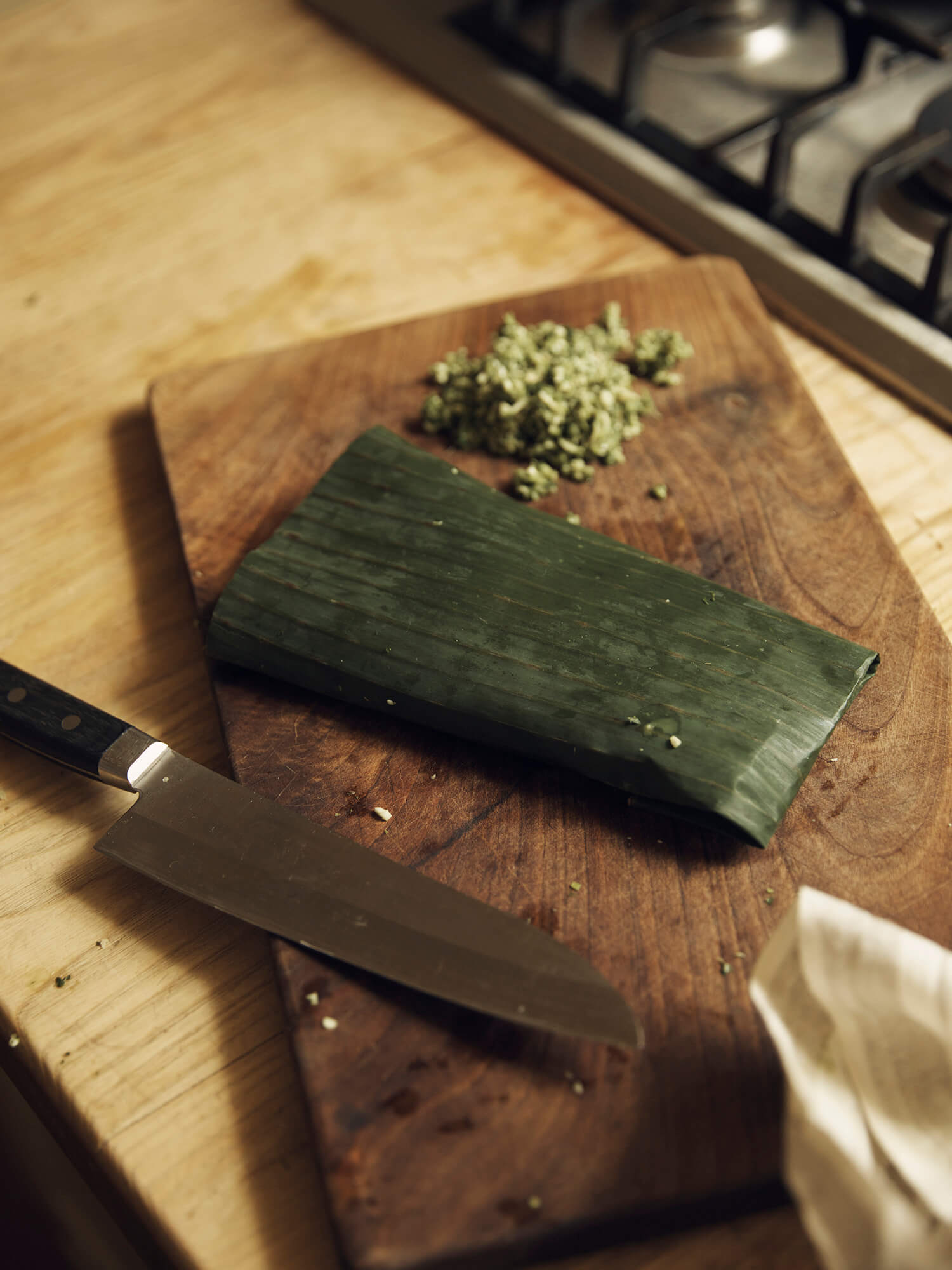
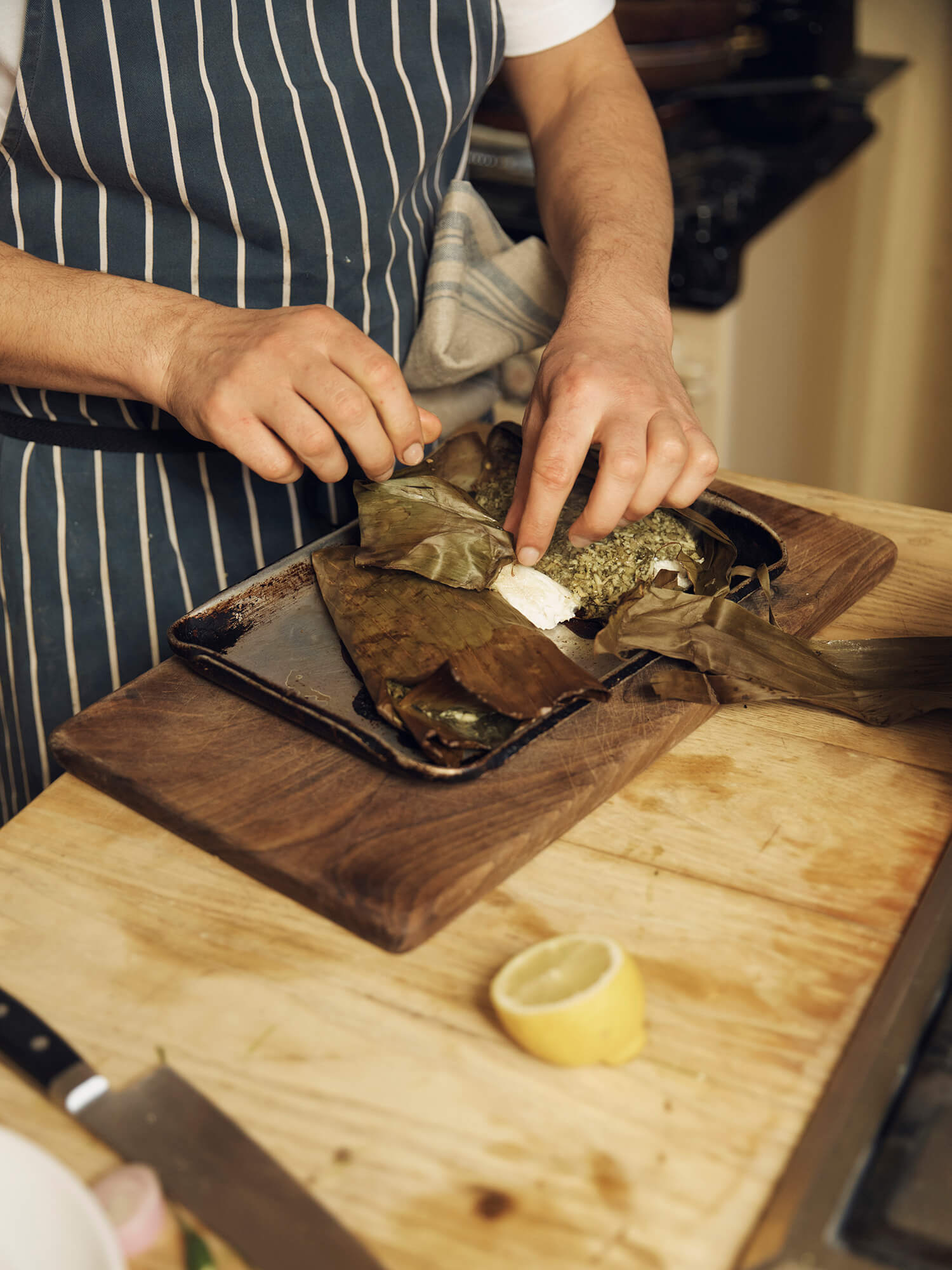

















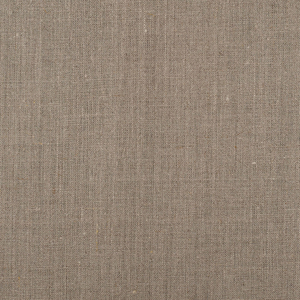





















Leave a comment